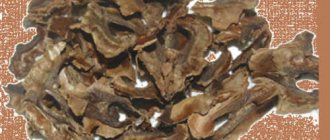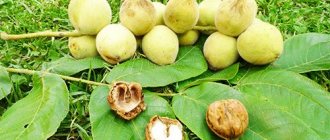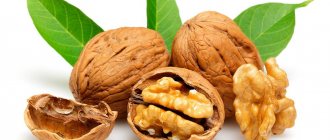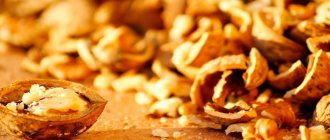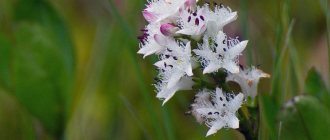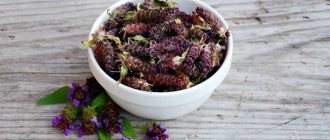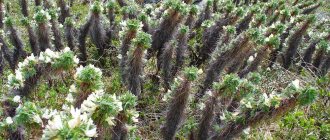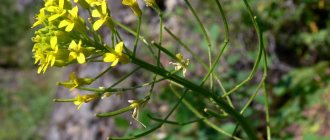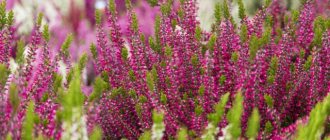Walnut leaves have many medicinal properties, although people are more familiar with the benefits of the fruits of this tree. In fact, in folk medicine almost all parts of the plant are used, sometimes combining them in one remedy. Of course, the concentration of microelements and vitamins in walnut fruits is higher than in the roots or bark, however, its leaves are highly valued not only for their vitamin composition, but also for their ability to purify the air and disinfect water.
What are the benefits of walnut leaves?
The healing properties of walnut leaves are due to its rich vitamin composition:
- Vitamin C – its concentration in walnut leaves is not inferior to that in black currants. It increases the body's resistance to viral infections, strengthens capillaries, and also normalizes the functioning of the kidneys and liver. In autumn and winter, when outbreaks of influenza are observed everywhere, it is recommended to drink teas and infusions made from walnut raw materials as preventative measures.
- Vitamin B1 nourishes the nervous system, strengthens the walls of blood vessels and normalizes metabolic processes in the body. It also improves the functioning of the digestive system, tones muscles and improves appetite. In addition to the leaves, vitamin B1 is found in large quantities in the walnut shell.
- Vitamin B8 minimizes the risk of blood clots in blood vessels, stabilizes blood pressure and improves metabolism. The benefit for men is that the high concentration of vitamin in walnut leaves helps in the prevention of erectile dysfunction.
- Vitamin P – has a tonic effect on the nervous system, normalizes liver function.
- Vitamin A (or retinol) is known primarily for its antioxidant properties - it promotes cell renewal in the body and removes fine expression wrinkles. The immunostimulating properties of carotene are no less known. It also helps improve vision and speed up the distribution of calcium in the body, which leads to strengthening of tooth enamel.
- Tannins - they are responsible for the astringent property of walnut leaves.
- Phytoncides have an antibacterial effect on the human body.
- Vitamin E is used in medicine for hormonal imbalance. In addition, it has a strengthening effect, increasing the body's resistance to viruses.
- The enzyme juglone has an antitumor effect on the human body, so the leaves are used for the prevention of cancer. It also helps normalize the gastrointestinal tract, improves the overall condition of the skin and helps with thyroid dysfunction.
- Potassium – this microelement helps normalize heart function.
- In addition, a high content of minerals was found in the leaf blades of this plant: zinc, phosphorus, magnesium, manganese, and iodine.
The rich chemical composition of walnut leaves determines a number of the following healing properties of the plant:
- anti-inflammatory;
- antifungal;
- astringent;
- painkiller;
- anthelmintic;
- wound healing;
- strengthening;
- tonic;
- hemostatic;
- vasoconstrictor;
- diuretic;
- bactericidal;
- choleretic.
Advice! Experts recommend medications based on walnut raw materials for chronic fatigue, lack of sleep and stress. Tea made from walnut leaves improves vitality.
Leaf composition
Microelements
Of the microelements, the leaves contain the most potassium (441 mg/100 g), phosphorus (346 mg/100 g) and magnesium (158/100 g).
- Potassium is excreted from the body especially in large quantities during physical activity. Potassium deficiency manifests itself in rapid fatigue, muscle weakness, disruption of the vestibular apparatus, irritability and tachycardia. Drinks based on walnut leaves with a high potassium content can speed up recovery, increase tone, normalize muscle conductivity,
- Phosphorus regulates the absorption of vitamins (especially group B) and microelements. Without it, normal human growth and development is impossible; phosphorus deficiency in the body leads to osteoporosis, periodontitis, disorders of the kidneys and liver, as well as slowdown and degradation of thought processes, up to the manifestation of signs of Alzheimer's disease.
- Walnut leaves, which contain a fairly large percentage of phosphorus, are used in formulations for the treatment of kidneys and problems with the gastrointestinal tract. The product is used for the prevention and treatment of oral diseases - stomatitis, periodontal disease. Used as an aid to improve brain function.
- Magnesium regulates the functioning of the neuromuscular system, is responsible for the transmission of impulses from the brain to the body and the response of muscle groups. Improves the body's internal mechanisms of energy production. Raw materials obtained from crushed walnut leaves have immunomodulating, wound-healing, and regenerating properties.
- Also, young leaves contain a high concentration of iodine, which makes it possible to use raw materials for the prevention of thyroid diseases.
Vitamins
Of the vitamins in terms of content in the product, the first place is vitamin C (1.3 mg/100 g of raw materials). This element is known for its wound-healing and anti-inflammatory properties, its beneficial effect on the production of collagen in the skin (that is, its rejuvenation) and strengthening of ligaments, tendons and blood vessel walls.
Thanks to vitamin C, walnut leaves are used as a wound healing agent, as well as a means to restore the health of the skin, treat dermatitis, acne, lichen and eczema.
Useful components
I don’t want to scare the reader with scientific terms, but it’s worth it: super-healthy x-flavonoids, naphthoquinones and tannins were found in walnut leaves.
- Flavonoids are natural antioxidants that neutralize the effect of aggressive substances on the human body. The action of walnut leaves as a gentle detox that can remove carcinogens from the body is based on this property.
- The class of naphthoquinones is represented by the compound juglone and a number of similar substances, although in small quantities, but still capable of influencing the processes of expulsion from the body of worms, pinworms, tapeworms, E. coli - everything that is unnecessary. Scientific studies have also confirmed the properties of juglone as an antitumor agent. Therefore, walnut leaves are used in folk medicine as an anthelmintic drug, and also as a means to combat tumors and neoplasms (including in women - in the treatment of mastopathy, endometriosis, ovarian cysts)
And finally, tannins are a wonderful component with the following properties:
- stop bleeding
- heal wounds
- bind protein compounds,
- capture substances and elements foreign to the body,
- anesthetize.
Tannins have a tart, astringent taste and have a coloring effect (depending on what reagent they react with, the colors may be different)
Such components determined the function of king nut leaves as an analgesic and anti-inflammatory ingredient in recipes for the treatment of gastritis, peptic ulcers, dysbiosis, and sore throat.
Please note: based on laboratory studies, the tree leaf extract was assigned a 4th - minimal - toxicity class. This means that all drugs based on this product are completely safe for human health!
Use of walnut leaf in folk medicine
The scope of use of medicines based on walnut raw materials is quite wide, due to the impressive list of its beneficial properties. In particular, walnut leaves are used for:
- diabetes mellitus;
- anemia;
- uterine bleeding in women;
- cystitis;
- exhaustion of the body after colds;
- weak immunity;
- inflammation of the lymph nodes;
- skin diseases (furunculosis, lichen, psoriasis);
- pyelonephritis;
- breast cancer;
- dysfunction of the liver and bladder;
- joint pain;
- worms;
- tuberculosis;
- inflammatory processes in the 3rd ear;
- periodontal disease;
- atherosclerosis;
- eczema;
- asthenia;
- diseases of the gastrointestinal tract.
Advice! To treat skin diseases, you can use baths with a decoction of walnut leaves. The duration of the procedure should not exceed 20 minutes.
For type 2 diabetes, tea made from walnut leaves is useful, however, one-time or indiscriminate use from time to time will not have a significant effect on the body. In order to achieve visible results, you need 2-3 courses of 7 days. After each course, it is recommended to maintain an interval of 3-4 days. Optimal dosage: 3-4 times a day, one cup.
Composition and beneficial properties of leaves
The composition of walnut leaves includes vitamins E, PP and B1, as well as carotene and ascorbic acid. These green leaves surpass even currants in ascorbic acid content. In addition, its amount gradually increases as the leaves grow. Around the end of July, vitamin C levels reach their maximum. Thanks to this vitamin, the immune, vascular and nervous systems are maintained in normal condition.
A large percentage of these leaves also contains carotene. This substance is considered a strong antioxidant; it helps improve vision and stimulate the immune system.
In addition to vitamins, walnut greens contain useful minerals such as magnesium, manganese and potassium, and there is quite a lot of iodine in the leaves. It also contains organic acids, aldehydes, flavonoids, tannins and essential oils. Walnut leaves contain such a valuable substance as juglone, which has antitumor properties.
The benefit of walnut leaves is that they have wound-healing properties - even purulent wounds can be healed. The leaves can stop bleeding and help fight inflammation.
Walnut foliage treats disorders of the digestive tract, successfully fights inflammatory processes and pain due to dysbacteriosis, gastritis and stomach or duodenal ulcers. The nut perfectly eliminates pathogens of intestinal diseases, pathogenic fungi and staphylococci.
Rules for procurement of raw materials
The full medicinal properties of walnut leaves are revealed only under proper storage conditions. It is equally important to follow the rules for collecting raw materials:
- The material is harvested in late May - early June, when the leaves are still small. The highest content of beneficial microelements is observed in young walnut leaves.
- It is recommended to pluck only 4-5 outer leaves from the shoot.
- Before laying the raw material out to dry, it is necessary to tear off the petioles from each leaf blade.
- The collected material is laid out in the sun in a thin layer, periodically turning the leaves over.
Important! The leaf blades should not turn black. This is the first sign of sunburn, in which the raw material begins to lose its beneficial qualities.
It is recommended to store dried leaves in a fabric bag. They also retain their healing properties well in glass containers.
In a dry room at room temperature, the collected raw materials can be stored for 2 years.
A few words about walnuts
Walnut (royal) walnut (Latin: Juglans regia) grows up to 45 m, providing pleasant shade to the garden. It is one of the most cultivated trees in the world, grown for its quality wood, healthy and tasty fruits and leaves, which are used in folk medicine.
The tree is best suited to light, dry, permeable soil with sufficient calcium and requires a sunny habitat, which, given its tall growth, is not a problem.
The life of a tree is usually 100 years or more, and fruiting begins approximately 10 years after planting. From a healthy mature tree you can harvest about 50 kg of nuts.
The young leaves are collected, the green peel during ripening (June-July), and then the fruits. The leaves and green peel have similar medicinal properties and can be used to treat the same health problems.
When collecting, you must ensure that fresh leaves do not crack or wrinkle, otherwise they will turn black and lose most of their beneficial qualities. The raw material is quickly dried at temperatures up to 40°C (during slow drying it darkens).
Store cooked greens in a dark and dry place.
Uses of walnut leaves
Dried or fresh walnut leaves are widely used in folk medicine and pharmacology. Based on the walnut leaf, infusions, decoctions, ointments, vodka and alcohol tinctures, teas and juices are made, which can be consumed internally and used externally.
Tincture of walnut leaves with vodka
A tincture from the leaves of the tree is made according to the following scheme:
- The dried raw materials are poured with vodka in a ratio of 1:10.
- The resulting mixture is infused for 10-15 days.
- Then the tincture is filtered through a double layer of gauze, after which it is ready for use.
Drink this walnut tincture for 2 weeks. Recommended dosage: 4 times a day, 6-8 drops diluted in water.
The scope of application of tincture from walnut leaves includes, first of all, the normalization of the gastrointestinal tract and the relief of stomach pain.
Infusion of walnut leaves
An infusion of walnut leaves has a lot of beneficial properties, which can be prepared according to the following recipe:
- ½ tsp. dry crushed raw materials are poured with 100 g of boiling water.
- The drink is infused for an hour.
- After the specified time, the infusion is filtered and poured into a glass container.
Dosage: 4 times a day, 1 tbsp. l.
Dry raw materials can be replaced with fresh ones. 1 large leaf per 100 g of water is enough. Before pouring boiling water over the raw material, it is recommended to grind it.
Walnut leaf decoction
There are many recipes for decoctions using various parts of the walnut, including leaf plates. The preparation scheme for different decoctions is generally not much different, however, the ingredients, depending on the scope of application, can vary greatly.
To normalize the menstrual cycle in women, the following decoction is suitable:
- The dried leaves of the tree are ground in a coffee grinder or blender. You can also finely chop them by hand.
- 1.5 tbsp. l. raw materials are poured with 500 ml of boiling water and left for 2-3 hours.
- Then the broth is filtered and the green mass is squeezed out, after which the filtered product is ready for use.
Drink the decoction 3 times a day before meals, 30 g.
Important! The decoction has a strong diuretic effect.
For inflammation of the mouth and throat, use a decoction with a higher concentration of raw materials:
- 2 tbsp. l. dried leaves pour 1 tbsp. water and put on fire.
- When the water boils, remove the broth and leave for an hour.
- Then the liquid is filtered through cheesecloth.
This decoction is also suitable for treating worms. In addition, it can be used externally for acne and furunculosis.
Green leaf juice
Fresh walnut raw materials are used to prepare juices. Bandages and tampons are moistened in them for the treatment of skin diseases (lichen, furunculosis, eczema, psoriasis).
The cooking algorithm is as follows:
- The raw materials are inspected for yellowish or damaged leaf blades.
- The selected material is thoroughly washed.
- Then the green mass is crushed manually or using improvised means in a container until juice appears.
The resulting liquid should be thickly smeared onto the affected area of the skin. In addition, you can dip a gauze bandage in the juice and apply it to the abscess or ulcer. Pimples and boils are usually treated spot-on.
Ointment
An ointment made from dried and crushed leaves of the tree is used primarily to treat felon and boils. You can prepare it according to the following scheme:
- 35 g of dry raw materials are ground in a blender or coffee grinder, after which 200 g of corn oil is poured into it.
- The thoroughly mixed mixture is kept for about a week in a dry room at room temperature.
- After the specified period, the ointment preparation is heated in a water bath for an hour.
- The resulting infusion must be strained 2-3 times through a layer of gauze. Then it is returned to the water bath for another 20-30 minutes.
- After this, the infusion is diluted with 30 g of wax and mixed thoroughly.
This ointment has proven itself in the healing of burns and festering wounds, as well as in the treatment of skin cancer.
Recipes with walnuts
Walnut leaves have long been used by folk healers to prepare medicinal decoctions, beneficial infusions, tinctures with alcohol, vodka or kerosene.
1. For atherosclerosis, as well as to reduce sugar and improve metabolic processes, the following remedy is used: take two teaspoons of crushed leaves for one glass of boiling water, infuse for an hour, strain, take 1⁄2 cup minutes 20-30 before meals.
2. For hemorrhoids, baths will help well, for the preparation of which you will need 250 grams of dry leaves and 5 liters of boiling water. It takes half an hour to boil over low heat. For a bath, you need to dilute the resulting product in a one to one ratio. For recovery you will need to do 10 to 15 procedures.
3. For lotions for skin diseases, eczema, rashes, lichen, you need to boil 5 tablespoons of nut shells mixed with leaves in half a liter of water for 15 minutes.
4. For rickets, bleeding gums, for gargling you will need 8 grams of leaves, which are poured with a glass of boiling water, infused for one hour, filtered. Take 2 tsp orally. before eating.
5. For diabetes, it is recommended to drink the entire infusion a day, prepared in the following way: take 8 grams of leaves per glass of water, which are boiled for 30 minutes. over low heat, cool, filter the solution.
Precautionary measures
The benefits of walnut leaves are undeniable, however, when using medicines based on them, moderation should be observed - abuse of decoctions and infusions that contain parts of this plant not only reduces their medicinal qualities to zero, but can also be harmful.
This happens for the following reasons:
- high concentrations of certain substances cause contraction of cerebral vessels, which leads to spasms;
- walnut is an allergen and causes an allergic reaction in persons intolerant to products based on this plant;
- a large number of alkaloids in many parts of the plant are harmful to the human body;
- in the treatment of psoriasis and eczema, too frequent application of bandages soaked in the broth to the skin causes an exacerbation of these diseases;
- exceeding the daily norm of substances contained in the leaves leads to problems in the gastrointestinal tract.
Contraindications to treatment with walnut leaves
Medicines containing any parts of the plant, including leaves, are contraindicated for use by persons with:
- chronic colitis;
- acute gastrointestinal diseases;
- thrombophlebitis;
- pancreatitis;
- neurodermatitis;
- individual intolerance to walnuts;
- increased blood clotting.
This applies only to products for oral use. Ointments and decoctions intended for external use have no contraindications, with the exception of an allergy to walnuts.
